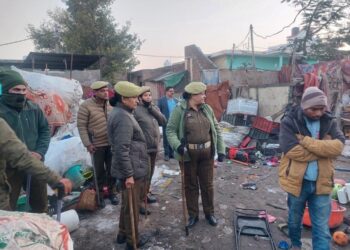Kashmir in prose, poetry and pictures
It is important that a community keep its history alive for future generations. Kashmir hasn’t always been widely featured or discussed in literature. However, that has been changing with new writing emerging from Kashmir ever since the region’s youth seized the political baton.
Several new titles focus mainly on the political situation there, and after the mass uprisings of 2008 and 2010, resistance literature has grown with writers using a variety of media to reach out to a wider readership. The latest is Of Gardens and Graves, a non-fiction book of acute historical, cultural and political coherence that incorporates three forms of storytelling – prose, poetry and photography.
The book’s four essays give detailed accounts of the history, importance, causes and outcomes of the decades-long conflict in Kashmir. The twenty-eight poems, originally written in the native Kashur language and translated by the author, document the resulting expressions.
The writing and the pictures are interwoven despite the fact that the images were not particularly shot for this book but are from prominent native photographer Javed Dar’s collection. His photo essay adds shape to the text.
According to the author, the book is a collaboration and several people have helped to find, translate and refine the poems. As a collection, these poems give the reader a sense of the place of poetry in Kashmiri culture.
An immense amount of poetry has been written in Kashur but very little of it has been made available to the larger readership outside its linguistic fold. Each of the poems featured here has a metaphoric connotation in daily life, politics or in the social fabric. Political poetry is not new to Kashmir; Kashmiri-American poet Agha Shahid Ali did it so eloquently that his work has always been a major influence in the region and outside. Naturally, Kaul also sheds light on the significance of Shahid’s poetry.
-And then there’s the explicit sentiment of a poem by Arshad Mushtaq entitled ‘That’s when I threw stones’ (pg. 79):
“When they shattered my dream
That’s when I threw stones.
When they fired at a suckling baby
My blood rose to a boil,
When they stuffed in a grave a hennaed groom
That’s when I threw stones!”
Stone throwing in Kashmir came to the forefront during the mass protests of 2008 when thousands of young people came out onto the streets to throw stones at the army. Memory, the tragic past, and suppression came together in the act of stone throwing. In response, they got bullets and extreme force, not dialogue or a peaceful resolution. The situation escalated with violations of human rights including the jailing, torture and killing of young men. Poetry like Mushtaq’s bears witness to this era.
An essay entitled The Witness of Poetry explains the significance of such work and the place it has in a conflict. Poetry is the collective expression of a region, both social and political, and allows the writer and the reader to dive deep into the heart, to come closer to feeling.
“Poems from conflict zones are sure guides to the intensity of feelings that result from prolonged conflicts, and which, over time play a significant role in the perpetuation of the conflict,” (pg. 136) writes Kaul who proves, in this book, that poetry is the bedrock of serious prose.
The best thing about Of Gardens and Graves is that it gives you the context of the conflict, expresses the feelings of the populace and backs that with images. This book is a must read for anyone who is interested in Kashmir and its people. —HT
Fahad Shah is a journalist and editor from Kashmir. He is the editor of the anthology, Of Occupation and Resistance: Writings from Kashmir (2013).
Follow this link to join our WhatsApp group: Join Now
Be Part of Quality Journalism |
Quality journalism takes a lot of time, money and hard work to produce and despite all the hardships we still do it. Our reporters and editors are working overtime in Kashmir and beyond to cover what you care about, break big stories, and expose injustices that can change lives. Today more people are reading Kashmir Observer than ever, but only a handful are paying while advertising revenues are falling fast. |
| ACT NOW |
| MONTHLY | Rs 100 | |
| YEARLY | Rs 1000 | |
| LIFETIME | Rs 10000 | |








